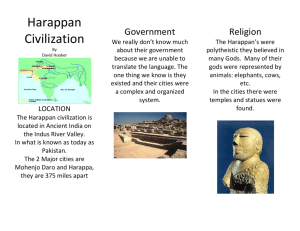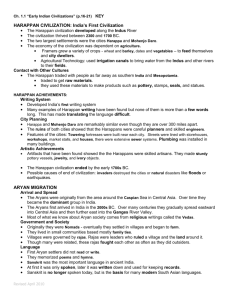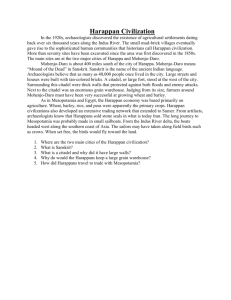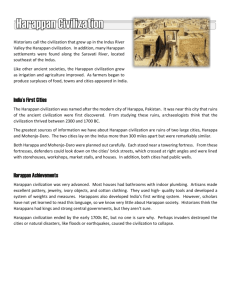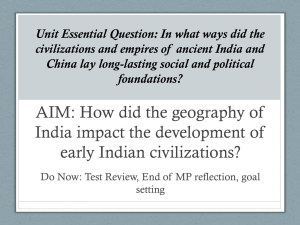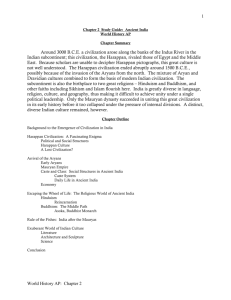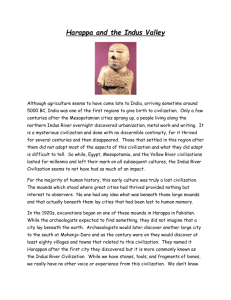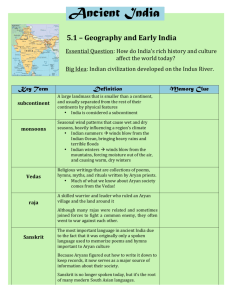End of Harappans
advertisement
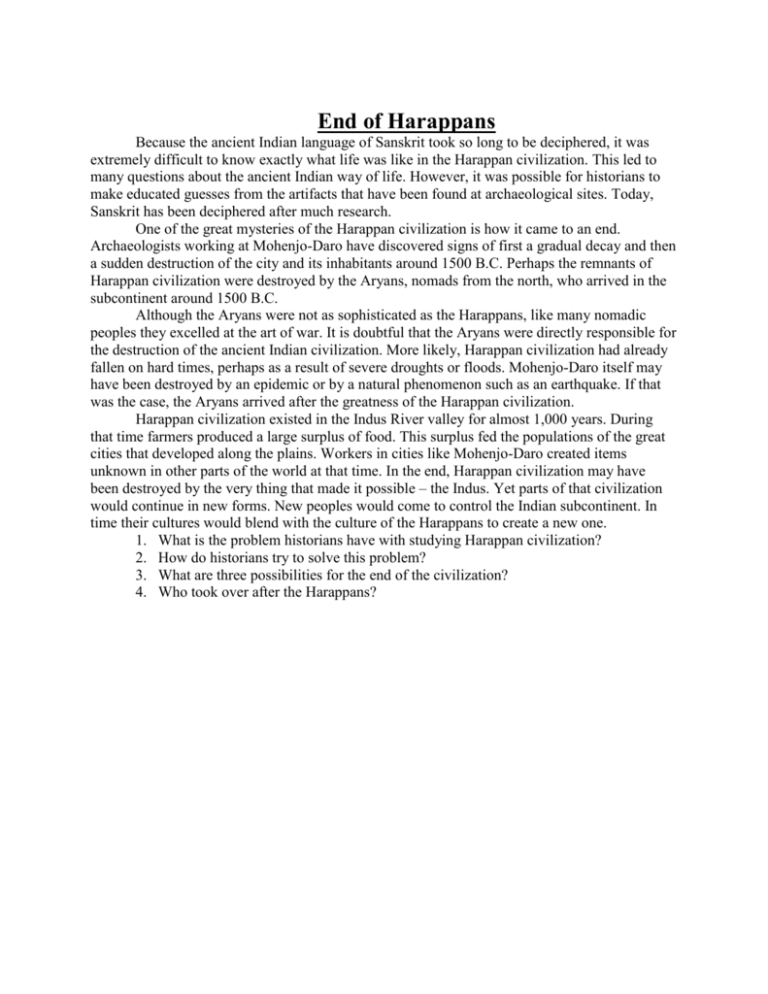
End of Harappans Because the ancient Indian language of Sanskrit took so long to be deciphered, it was extremely difficult to know exactly what life was like in the Harappan civilization. This led to many questions about the ancient Indian way of life. However, it was possible for historians to make educated guesses from the artifacts that have been found at archaeological sites. Today, Sanskrit has been deciphered after much research. One of the great mysteries of the Harappan civilization is how it came to an end. Archaeologists working at Mohenjo-Daro have discovered signs of first a gradual decay and then a sudden destruction of the city and its inhabitants around 1500 B.C. Perhaps the remnants of Harappan civilization were destroyed by the Aryans, nomads from the north, who arrived in the subcontinent around 1500 B.C. Although the Aryans were not as sophisticated as the Harappans, like many nomadic peoples they excelled at the art of war. It is doubtful that the Aryans were directly responsible for the destruction of the ancient Indian civilization. More likely, Harappan civilization had already fallen on hard times, perhaps as a result of severe droughts or floods. Mohenjo-Daro itself may have been destroyed by an epidemic or by a natural phenomenon such as an earthquake. If that was the case, the Aryans arrived after the greatness of the Harappan civilization. Harappan civilization existed in the Indus River valley for almost 1,000 years. During that time farmers produced a large surplus of food. This surplus fed the populations of the great cities that developed along the plains. Workers in cities like Mohenjo-Daro created items unknown in other parts of the world at that time. In the end, Harappan civilization may have been destroyed by the very thing that made it possible – the Indus. Yet parts of that civilization would continue in new forms. New peoples would come to control the Indian subcontinent. In time their cultures would blend with the culture of the Harappans to create a new one. 1. What is the problem historians have with studying Harappan civilization? 2. How do historians try to solve this problem? 3. What are three possibilities for the end of the civilization? 4. Who took over after the Harappans?

